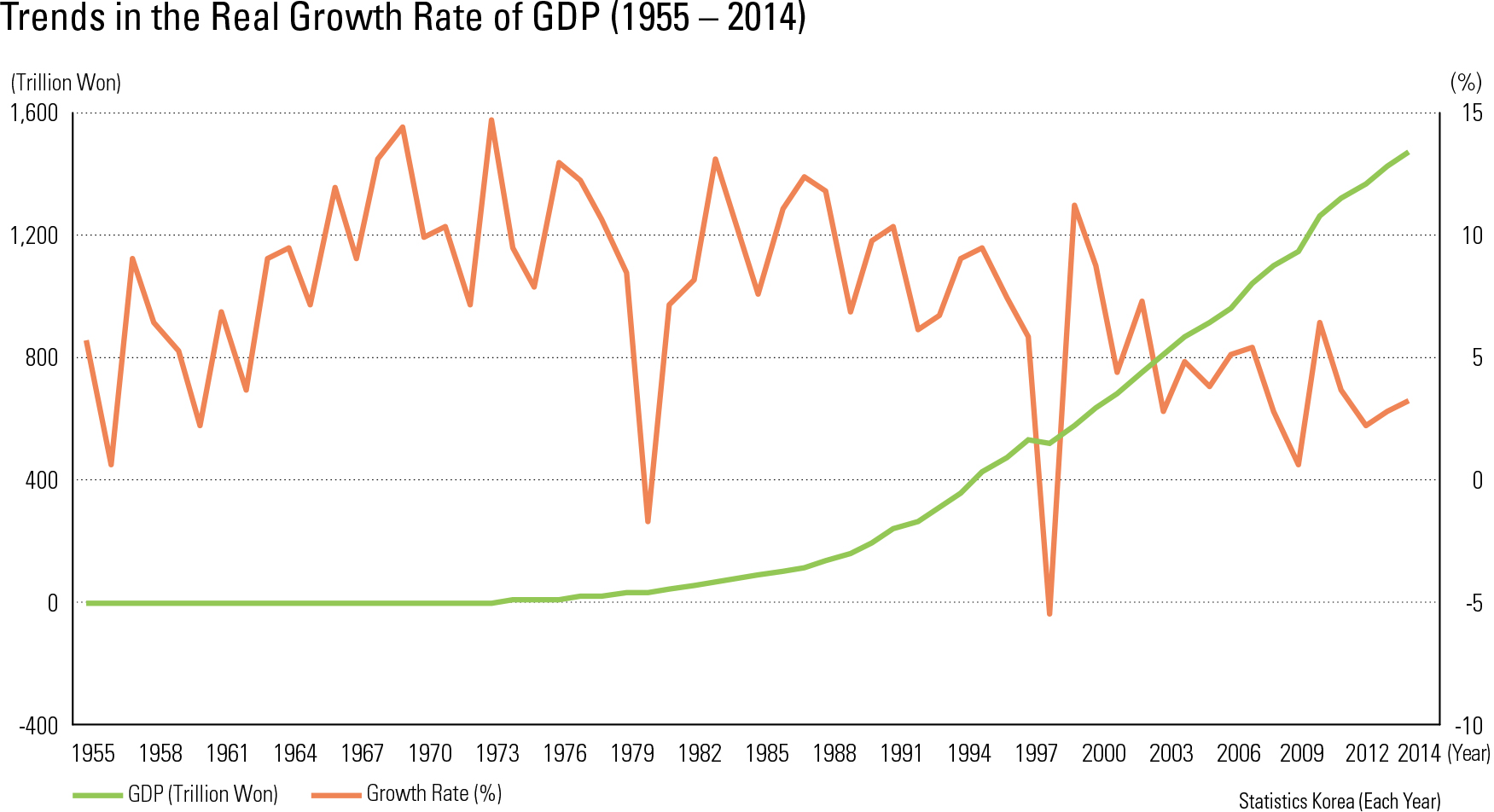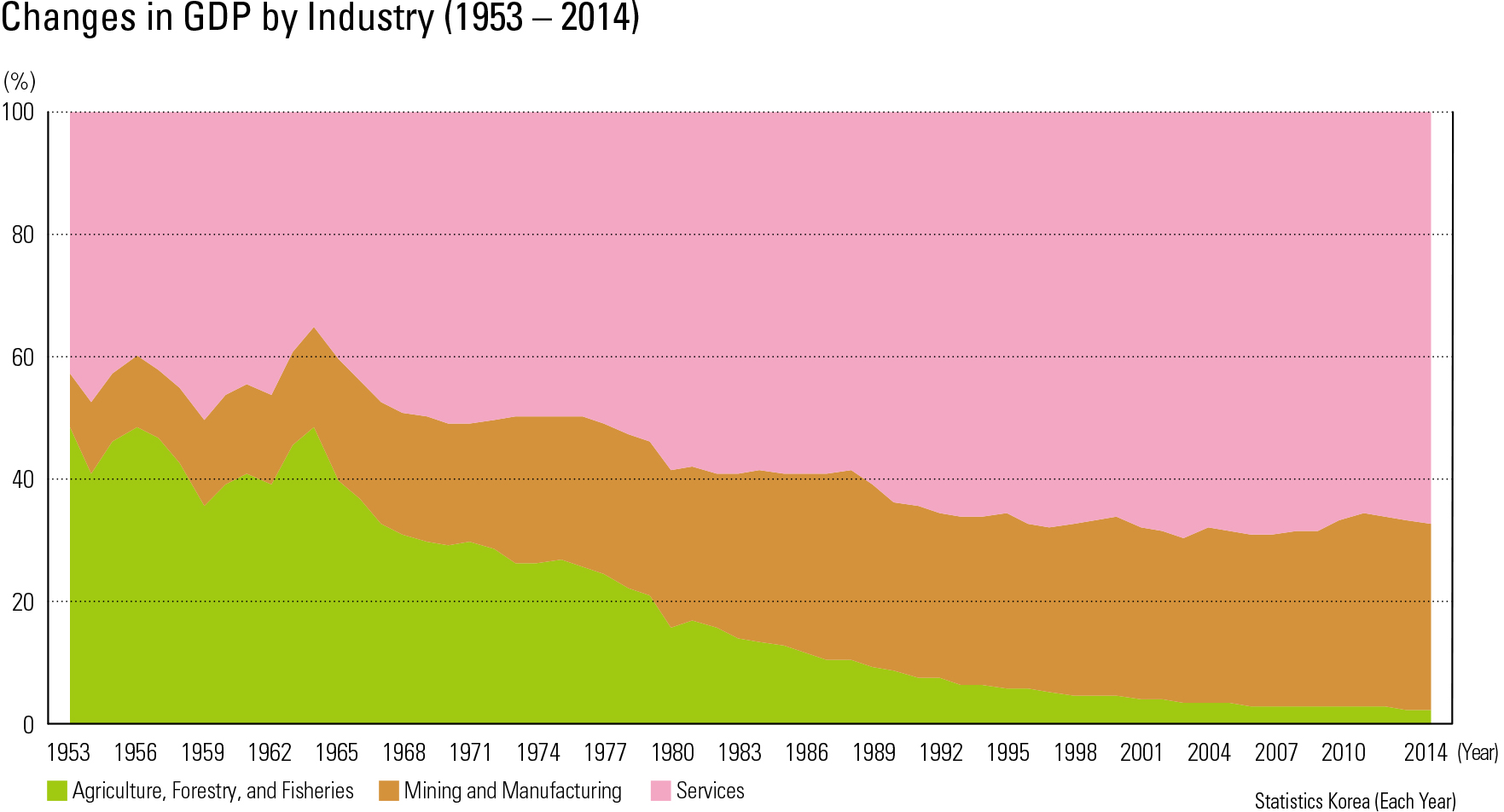English III
Economic index has been used to understand the economic power or business cycle of a country, or to predict the future of the business cycle, and is often measured by using various statistically valid indicators. Different countries adopted different indices for their national atlas. In the United States, the indices are: per capita income, unemployment rate, per capita number of jobs, median household income, and per capita average wage of employee. In Canada, only income related economic indicators, such as median household income, male median income, and female median income, were selected. In this National Atlas of Korea, total regional gross domestic product (GDP), total number of establishments and employees, value added by industries, international trade and balance of payments, research and development activities, local finance, and other statistical indicators are presented as economic indicators. Regional gross domestic product means the sum of the newly created final products and services rendered, i.e., total value added during a speci c time at a particular place. With other economic indices, the size of the regional economy, the level of production, and industrial structure can be deduced. Furthermore, these can be used as the basis for the establishment of regional economic policies and regional economic research. If this regional GDP is expanded to the national level, it could be the national gross domestic product; however, the data used for the estimation and the methodologies may vary and may not necessarily be the same. According to the World Bank (2014), Korea's gross domestic product (nominal basis) was ranked 12th in the world in 2014 at 1 trillion won, or 1,410 billion USD, and when adjusted with the Purchasing Power Parity, it occupied 13th place. The growth pattern of the gross domestic product showed that in 1971 it was just over 10 billion USD, and after 15 years in 1985 it increased 10 times, exceeding 100 billion USD. In 2006, 35 years after it first exceeded 100 billion USD, it broke through the 100-fold increase of 1 trillion USD, demonstrating that Korea has achieved accelerated economic growth in a compressed time frame. A review of the economic growth pattern of Korea reveals that pre-1960, GDP growth rate changes remained less than 5%; however, in the 1960s (1961 – 1970) the growth rate was 9.5%; in the 1970s (1971 – 1980), 9.3%; in the 1980s (1981 – 1990), 9.9%, with the highest growth rate of almost 10% for some time during this time. But in the 1990s (1991 – 2000) the growth rate declined to 7.0% and in the 2000s (2001 – 2010), the growth rate dropped to 4.4%, indicating the slowing growth of the Korean economy. Since 2010, growth has further slowed, with a growth rate of less than 4%. An analysis of the changes in the industrial structure by industrial sector reveals that the proportion of the gross domestic product accounted for by the agriculture, forestry, and fishery industries declined sharply from 48.2% in 1953 to 28.9% in 1970, 8.4% in 1990, and only 2.3% in 2014. Meanwhile, mining and manufacturing had the proportion of 8.9% in 1953, 20.4% in 1970, 28.0% in 1990, and 30.3% in 2014, demonstrating a continuous increase. Services and other tertiary sectors were at 42.8% in 1953, 50.7% in 1970, 63.6% in 1990, and 67.4% in 2014, showing a proportional increase. This shows that the industrial structure of Korea was quickly reorganized after 1970, with industry's proportion of the gross domestic product moving from a primary industry to secondary and tertiary industries.
page_2 |

